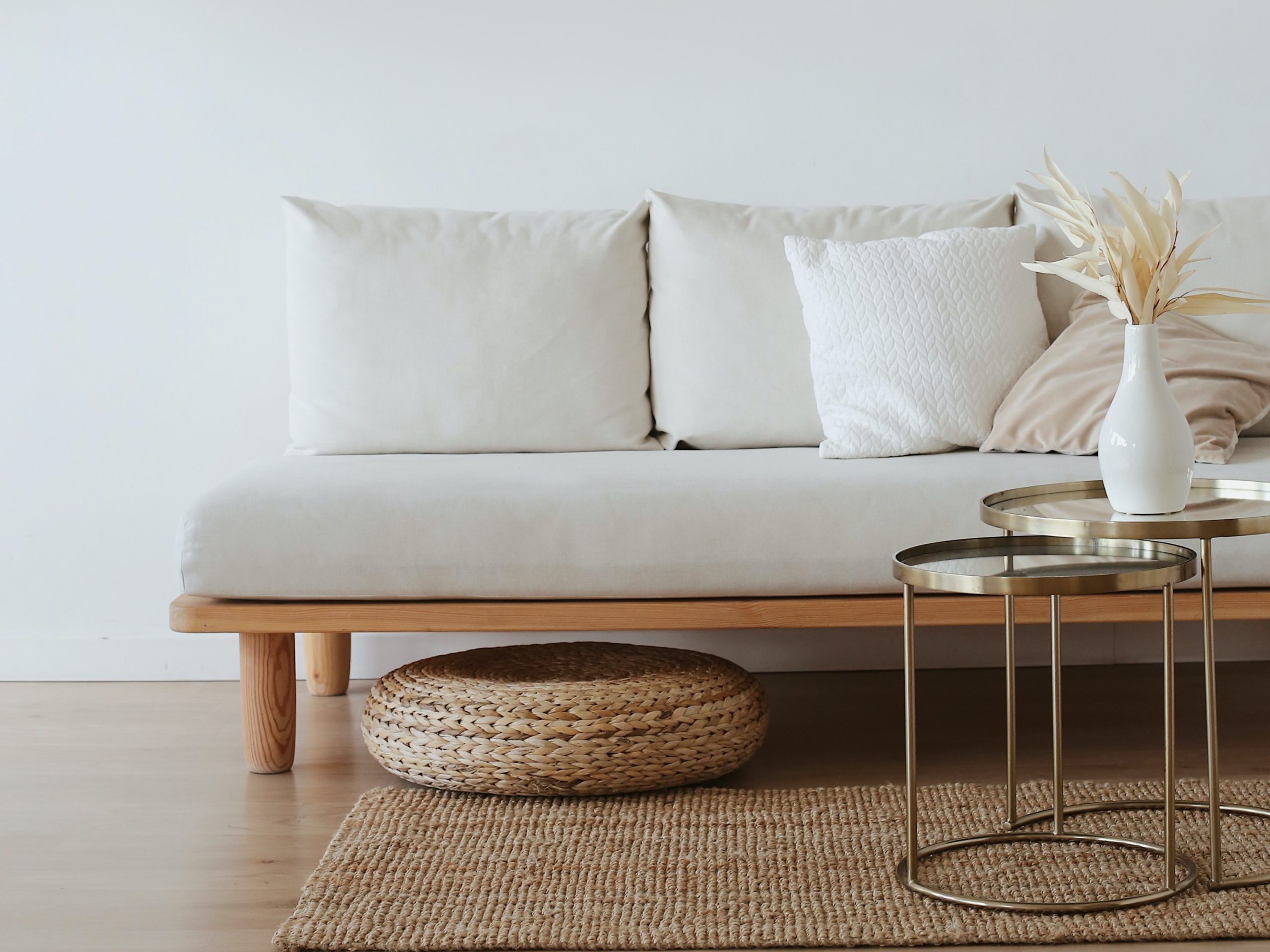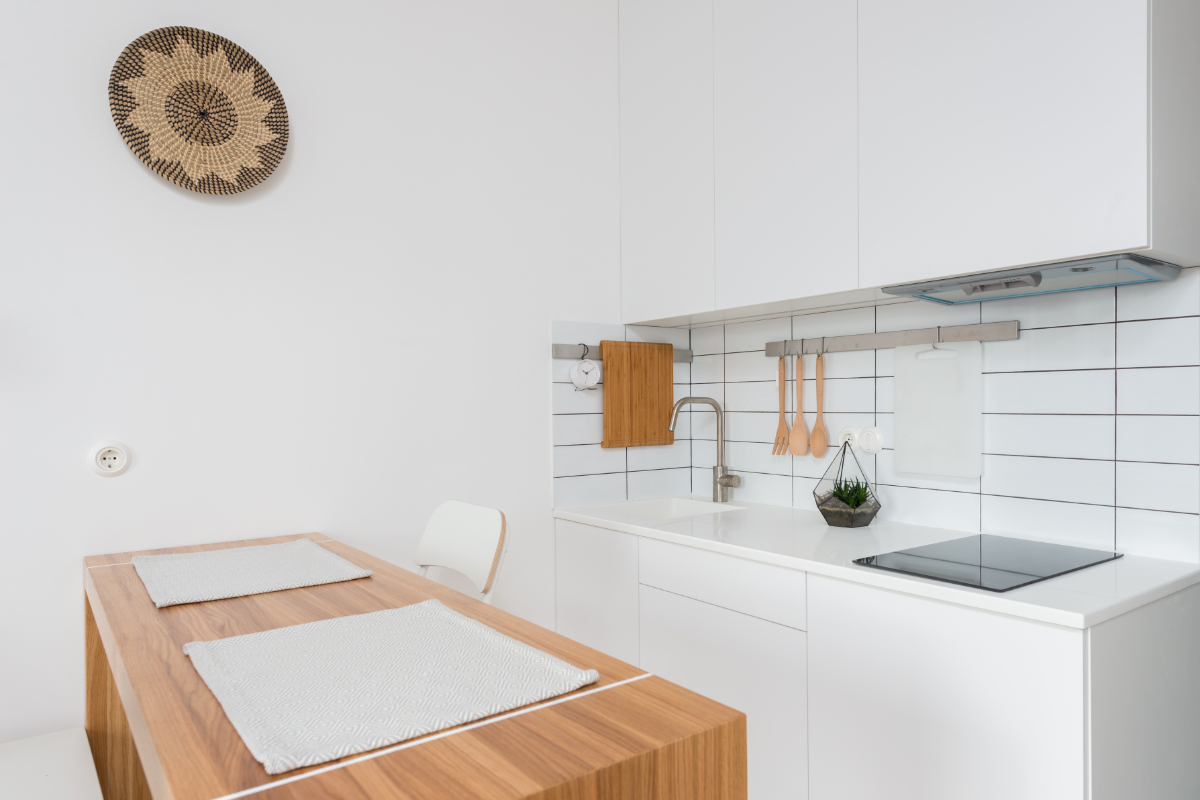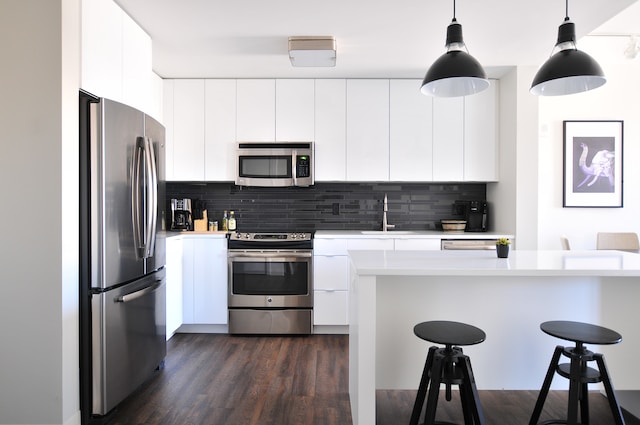Create a Minimalist Haven with Our Guide to Home Decor
There are some affiliate links below, but they are all products I highly recommend. For more info, view my disclosure here.
Are you feeling overwhelmed by clutter and a busy, chaotic living space? If so, it may be time to embrace the minimalist lifestyle. Minimalist decorating is all about creating a serene and calming atmosphere by simplifying your space and belongings.
In this guide, we will explore the principles of minimalism and provide practical tips for achieving a minimalist look in your home.
First, we will discuss the importance of decluttering your space and getting rid of unnecessary items. By simplifying your belongings, you can create a more organized and peaceful environment.
Next, we will explore the use of a neutral color palette to create a clean and timeless look. We will also discuss the concept of negative space and how it can help to make your space feel more open and airy.
Additionally, we will delve into the selection of functional and purposeful furniture that serves a specific need while adding to the overall aesthetic.
Lastly, we will explore how to create a calming and serene atmosphere through the use of lighting, natural elements, and personal touches.
By following this guide, you can transform your home into a minimalist haven that promotes relaxation and tranquility.
Understanding the Principles of Minimalism
Now that you understand the principles of minimalism, you can begin to transform your space into a sanctuary of simplicity and serenity. The first step in minimalist decorating is to declutter your space. Get rid of any unnecessary belongings and only keep the things that truly bring you joy and serve a purpose. This will help create a clean and organized environment.
Next, focus on a neutral color palette. Stick to shades of white, beige, and gray to create a calm and cohesive look. Avoid bold colors and busy patterns as they can make a space feel cluttered and overwhelming.
When it comes to furniture, less is more. Choose pieces that are functional and streamlined, with clean lines and simple designs. Opt for furniture that has hidden storage to help keep your space tidy and free from visual clutter.
Incorporate natural elements into your minimalist decor. Use materials like wood, stone, and metal to add texture and warmth to your space. Plants are also a great way to bring life and freshness into a minimalist room.
Lastly, pay attention to lighting. Natural light is ideal, so keep your windows uncovered as much as possible. Use light curtains or blinds to allow the light to filter in while maintaining privacy. If natural light is limited, opt for soft, warm artificial lighting to create a cozy atmosphere.
By following these principles, you can create a minimalist space that’s both calming and welcoming.
Decluttering Your Space
To create a more refined and uncluttered living environment, start by decluttering your space. Begin by going through each room and evaluating every item you own. Consider whether each item serves a purpose or brings you joy. If not, it’s time to let it go.
Be ruthless in your decision-making process and don’t hold onto things out of guilt or sentimentality. Start with the easy things, like excess paperwork or outdated electronics that are simply taking up space. Then move on to clothing and accessories. Only keep items that you wear regularly and love. Donate or sell the rest.
Clear out kitchen cabinets and drawers, getting rid of duplicate or unused items. Once you’ve decluttered the visible areas, tackle hidden storage spaces like closets and under-bed storage. Sort through boxes and bins, discarding anything you haven’t used in the past year. Remember, the goal is to simplify and streamline your living environment.
As you declutter, be mindful of your purchasing habits going forward. Avoid impulse buys and only bring items into your home that you truly need and love. By decluttering and curating your belongings, you’ll create a minimalist space that feels peaceful and organized.
Simplifying Your Belongings
Start by simplifying your belongings and envision a space free of unnecessary clutter and excess items. Take a critical look at each item you own and ask yourself if it serves a purpose or brings you joy. Be honest with yourself and let go of things that no longer serve a practical or sentimental value. Remember, a minimalist space is about quality over quantity.
Start by decluttering your wardrobe. Keep only the clothes that fit you well, make you feel confident, and align with your personal style. Donate or sell the rest.
Next, move on to your book collection. Keep books that you love and will reread, and donate the ones that you no longer have an interest in. The same goes for other collections or hobbies you may have. Keep only the items that truly bring you joy and let go of the rest.
When it comes to sentimental items, be selective. Keep a few meaningful items that hold special memories, but avoid holding onto every trinket or souvenir. Instead, focus on creating memories and experiences rather than accumulating material possessions.
By simplifying your belongings, you will create a more peaceful and organized space. Remember, minimalism isn’t about deprivation, but about surrounding yourself with things that truly add value to your life.
Choosing a Neutral Color Palette
Embrace the soothing simplicity of a neutral color palette and let it transform your space into a serene oasis. When choosing a color scheme for your minimalist décor, opt for shades of white, beige, gray, or taupe. These colors create a sense of calm and provide a clean backdrop for your furnishings and accessories.
Start by painting your walls in a soft, muted shade of white or light gray. This’ll instantly brighten your space and make it feel more open and airy. To add depth and interest, incorporate different textures into your décor. Think soft linen curtains, a plush wool rug, or a sleek leather sofa.
When it comes to furniture, stick to clean lines and simple designs. Avoid bold patterns or loud colors that can be visually overwhelming. Instead, opt for pieces in neutral tones that blend seamlessly with the rest of your space.
To add pops of color, use natural elements such as plants or flowers. The vibrant greens and subtle hues of nature’ll bring life to your minimalist interior without overpowering the overall aesthetic.
Remember, the key to minimalist decorating is to keep things simple and clutter-free. By choosing a neutral color palette, you create a soothing and harmonious atmosphere that allows your mind to relax and unwind.
Embracing Negative Space
Create a sense of spaciousness and tranquility in your space by intentionally leaving areas of empty space, allowing your eye to focus on the key elements of your minimalist design. Embracing negative space is an essential element of minimalist decorating, as it helps to create a clean and uncluttered aesthetic.
One way to embrace negative space is by choosing furniture and decor that are sleek and minimalistic in design. Opt for pieces with clean lines and simple shapes, and avoid cluttering your space with unnecessary items. By doing so, you allow the negative space to become a prominent feature in your room.
Another way to embrace negative space is by strategically arranging your furniture and decor. Leave areas of your walls, floors, and surfaces empty, creating visual breathing room. This not only helps to create a sense of spaciousness, but it also allows the eye to focus on the few key elements you have chosen to include in your design.
Lastly, don’t be afraid to use color strategically in your minimalist design. By utilizing a neutral color palette and incorporating pops of color sparingly, you can create a visually pleasing contrast that highlights the negative space in your room.
Embracing negative space is a key aspect of minimalist decorating. By intentionally leaving areas empty and strategically arranging your furniture and decor, you can create a sense of spaciousness and tranquility in your space.
Incorporating Functional and Purposeful Furniture
Now that you understand the importance of embracing negative space in minimalist decorating, it’s time to focus on incorporating functional and purposeful furniture into your space.
When it comes to minimalist decorating, every piece of furniture should serve a purpose. Instead of cluttering your space with unnecessary items, choose furniture that is both functional and aesthetically pleasing. Look for pieces that have clean lines, simple designs, and multiple uses.
Consider investing in furniture that doubles as storage, such as ottomans with hidden compartments or coffee tables with shelves. This will help you maximize the use of your space while keeping it organized and clutter-free.
Another tip is to choose furniture that can easily be rearranged or folded away when not in use. This will give you the flexibility to create different layouts and make the most of your space.
Remember, the key to minimalist decorating is to have only what you need and love. By incorporating functional and purposeful furniture, you can create a space that not only looks beautiful but also serves your everyday needs effortlessly. So, take some time to assess your furniture and make thoughtful choices that align with your minimalist vision.
Creating a Calming and Serene Atmosphere
To achieve a calming and serene atmosphere in your space, consider incorporating elements that promote relaxation and tranquility. Start by choosing a color palette that consists of soft, neutral tones such as whites, greys, and pastels. These colors have a soothing effect on the mind and create a sense of calmness in the room.
Next, declutter your space and keep only the essentials. Minimalism is all about removing unnecessary items and creating a clean and organized environment. Clear surfaces and open spaces will help you relax and clear your mind.
When selecting furniture, opt for pieces that have clean lines and a simple design. Avoid bulky furniture that can make the room feel crowded and overwhelming. Instead, choose furniture that’s functional and practical, such as a comfortable sofa with a minimalist design or a sleek coffee table.
Incorporate natural materials and textures into your space to create a sense of warmth and tranquility. Use materials like wood, bamboo, and linen to add a touch of nature to your decor. Additionally, bring in plants and flowers to introduce a fresh and calming element.
Lastly, pay attention to lighting. Use soft, diffused lighting instead of harsh, bright lights. Install dimmer switches or use floor lamps with warm-toned bulbs to create a cozy and relaxing ambiance in the room.
By following these tips, you can create a calming and serene atmosphere in your space, making it the perfect place to unwind and relax after a long day.






